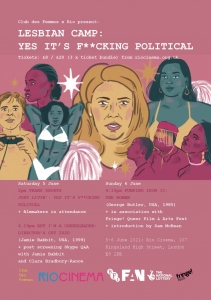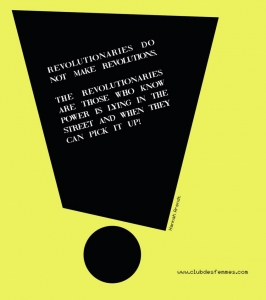The LGBTQ+ films and TV shows we watched growing up, either to seek validation or, if you’re anything like me, to watch hours of the L Word just to catch a glimpse of Shane, are often missed from day-to-day film programming. You can rarely walk into any big-name cinema and see Natasha Lyonne in that infamous pink dress with the words …But I’m a Cheerleader plastered in headlights. This absence of queer joy on screen is something that queer programmers are aiming to combat by curating film programmes that make our community feel seen, heard and represented.
First of all, it’s helpful to know what a programmer actually does and how integral their role is in what is seen on the big and small screen. The role of a programmer is to select the films to be shown in festivals, cinemas and on TV that reflect the needs of their regular audiences and reach potential new viewers. They must have an understanding of their audience, thinking about timings and the tone or message they want to convey with their selection of films.
Club de Femmes are a queer feminist collective which curates their film screenings and events using archive and contemporary moving image while upholding its mission to “offer a freed up space for the re-examination of ideas through art”.
I spoke with part of the collective, Selina Robertson, So Mayer, Ania Ostrowska and Jenny Clarke, to understand more about their history and how important it is to see more queer representation on screen.
- How did Club des Femmes form?
Selina: Sarah Wood and I launched Club des Femmes in June 2007 because we were new friends and wanted to go to the cinema together and watch feminist films like Born in Flames, by Lizze Borden, but we couldn’t find anywhere that was showing this cinema. When we realised we both loved the same filmmakers like Lizzie Borden and Vivienne Dick, we thought, let’s see if we can show this dynamic, exciting work to our friends and their friends too… that’s where friends des femmes came from. In London at the time, there was a feminist space to be filled in the cinema, in that it was hard to find year-round queer feminist film programming. We named ourselves Club des Femmes, after the 1936 French comedy Club de Femmes (The Women’s Club) by Jacques Deval. The film is one of the earliest authentic (and so positive) representations of a butch lesbian character in 20th-century cinema
- Were there any films or programs you saw that helped shape your desire to start programming and influence your work?
Selina: Digging into our archive, I found the original press release we sent out from June 2007, a season of feminist cinema at Curzon Soho. I think it’s the only press release we wrote, we got very creative and put lots of images in there too. There we showed films by Lizzie Borden, Sadie Benning and Vivienne Dick. Activist queer feminist filmmakers who defined a whole new world order, they made feminist punk cinema we both cherished. I remember at the time, we were worried they were forgotten. That’s why we wanted to show the work and re-contextualise the films for new audiences. Re-reading that press release again now, I feel our energy, our collective superpowers, to re-imagine the world.
So: I know that Selina had previously programmed films by Barbara Hammer for the London Lesbian and Gay Film Festival (now BFI Flare), and she has remained a huge influence for us and we’ve continued to programme and celebrate her work and vision.
In recent years, we’ve also learned more about the history of Circles and Cinema of Women, the two path-finding UK feminist distribution collectives who formed in the 1970s (and became Cinenova), and we even re-staged Circles’ first programme at the Photographers’ Gallery in collaboration with Felicity Sparrow (Circles) and Charlotte Procter (Cinenova). We’re inspired by and want to keep retelling collective feminist histories!
- How do you curate a program that makes you feel queer joy, and is this integral to each program?
Jenny: I’m jumping in here to talk about programming short films! I think queer joy is integral to our curation but also natural because we are a queer collective screening films for queer audiences, so we are looking beyond the trauma centred mainstream narratives and representation. We’re lucky to have so many films from queer creators (although there could definitely be more!) to work with, and this brings a richness to the programmes that can create a joyful viewing experience without ignoring or diminishing the realities of queer lives around the world.
Our programme of shorts Just Livin’, which screened alongside our Lesbian Camp feature screenings of But I’m a Cheerleader and Pumping Iron 2: The Women, did just that. The films matched the campy, fun and heightened aesthetics of the features, but still represented reality for young queer people. Joy is not mutually exclusive from reality but queerness is joyful and while mainstream cinema forgets this often, our job is to find the films that know this and bring them to audiences.

CLUB DES FEMMES. © JAVIE HUXLEY, 2021.
Once we’ve found the films, we then move into curation and positioning the films for the audiences. In short film terms this can be as simple as finding the best flow for a programme or the best title which invites an audience to connect with the joy in the films! But it is also about events and additional content that we build around the film screenings, our recent screening of Leontine Sagan’s Madchen in Uniform with Fringe! is a great example, as we had So introduce the screening to bring context and gossip about the film’s origin to the forefront and then after the film’s abrupt end we had a performance by drag king Gorgeous Michael – which was seriously joyful!
- Do you think we are starting to see more year-round queer programming outside of the festival circuit and already established queer spaces, or are we still needing more curators?
So: We are seeing more year-round queer programming like Pink Palace at the Rio Cinema, Hackney; Forbidden Colours programmed by Alex Davidson at Barbican Cinema; and Orkney Pride community screenings at The Phoenix, Kirkwall, as well as more festivals such as SQIFF, Fringe!, Queer East, Leeds Queer Film Festival, film tours like Birds Eye View’s Queerious, and initiatives like Screen Archive South East’s queer shorts commissions. There are also loads of exciting new queer-centric and queer-inclusive programmers and programming collectives, like T A P E, who recently had a great touring programme of queer nightlife shorts.
There are, however, fewer dedicated queer spaces and venues in many of our cities and towns. Independent programming and curation remains precarious work, mostly done by freelancers and volunteers without any long-term support in place. There’s also decreasing coverage as we lose listing mags (and potentially Twitter which, since the collapse of Facebook pages, has been key for getting the word out about screenings and other events!).
So while more and queerer events are happening in cinemas and online, it can be harder to access them, and also harder to start or maintain a project without funding. There’s always a need for more curators who bring new insights and communities, but the lack of secure funding is exclusionary.
- Our program for Live, Laugh, Lesbian takes from the archives of films made by and for lesbians as well as more modern-day representations of lesbian stereotypes. Do you think it’s important to look back at our history from a critical or political perspective when curating queer programs?
Ania: It is indeed crucial to know our queer film history and be able to critically assess it, checking which works pass the test of time and which have aged quite badly; with the latter, it’s important to consider if they’re still worth showing and if so, they need to be contextualised. It’s amazing to see new audiences answer to the hits of yesterday with enthusiasm and energy.
So: This is how we programmed our Lesbian Camp classics Pumping Iron II and …But I’m A Cheerleader, with queer visual culture scholars Sam McBean and Clara Bradbury-Rance (author of Lesbian Cinema after Queer Theory) flexing their intellectual and pop cultural muscles to give our audiences ways into the films that were joyful because they were also lovingly critical and aware. You can see their intros on our Vimeo. Circulating and archiving the new contextual material that you commission as queer programmers is essential, as it means more people can connect to the films!

CLUB DES FEMMES ARCHIVE. DESIGN BY SARAH WOOD.
- We have a personal connection to the films and their representation within the context of our screening – is having a connection to the films you screen important for your programming process?
So: Yes, it’s super important! As an unfunded queer feminist curation collective, we’re doing this out of love and passion – and also, we stand by the films we programme. We are programming to make community, so to connect to people through films, we need to be connected to the films! Sometimes it’s quite an investigation and lots of persuasion even to track down and secure a film for screening, and I don’t think we’d do that if we didn’t have strong connections to the films. Selina spent years tracking down PUMPING IRON II, and she owns the soundtrack and a T-shirt!
Get free tickets for our screening event and afterparty Live, Laugh Lesbian here for more queer joy!